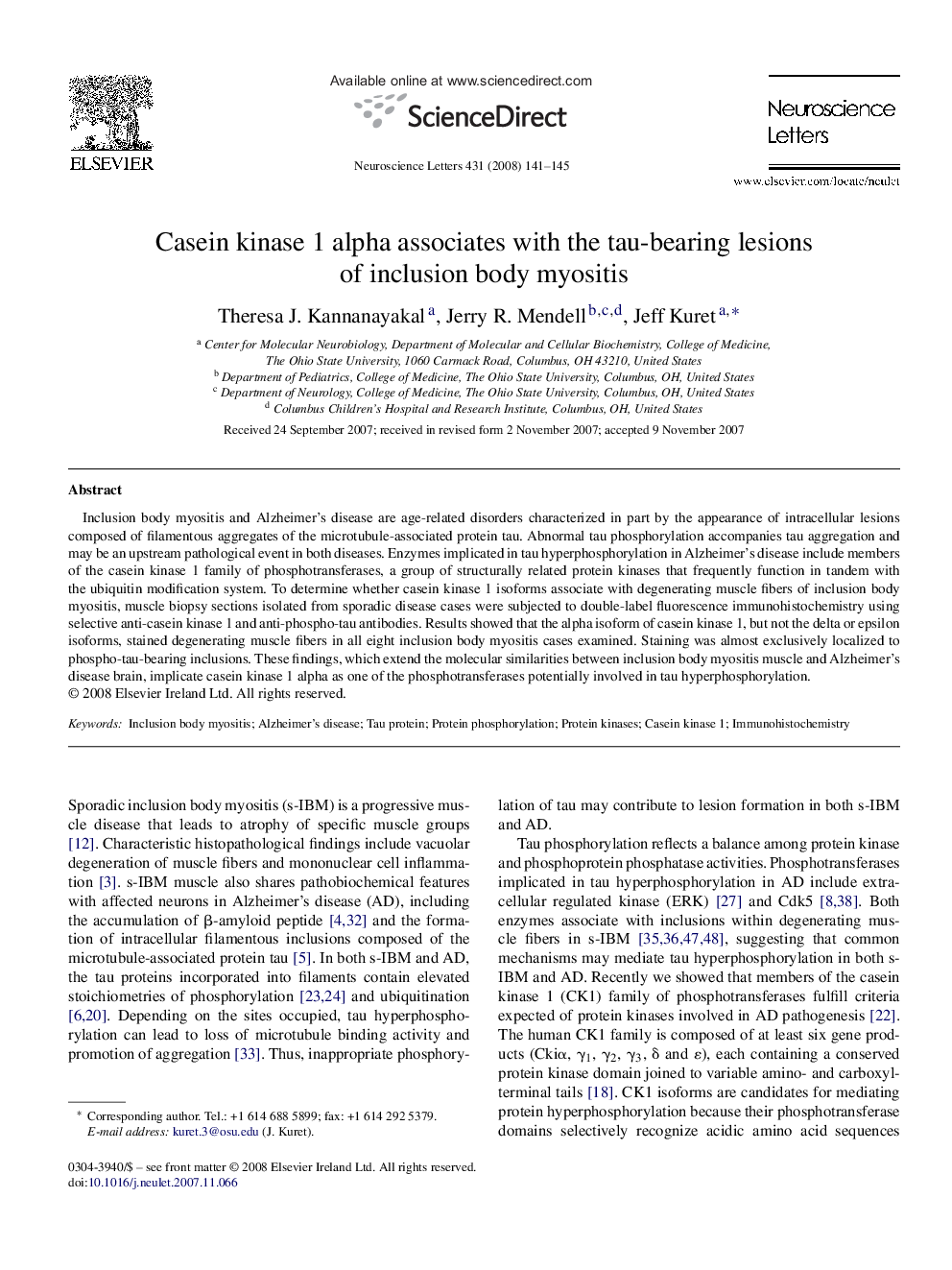| Article ID | Journal | Published Year | Pages | File Type |
|---|---|---|---|---|
| 4348801 | Neuroscience Letters | 2008 | 5 Pages |
Inclusion body myositis and Alzheimer's disease are age-related disorders characterized in part by the appearance of intracellular lesions composed of filamentous aggregates of the microtubule-associated protein tau. Abnormal tau phosphorylation accompanies tau aggregation and may be an upstream pathological event in both diseases. Enzymes implicated in tau hyperphosphorylation in Alzheimer's disease include members of the casein kinase 1 family of phosphotransferases, a group of structurally related protein kinases that frequently function in tandem with the ubiquitin modification system. To determine whether casein kinase 1 isoforms associate with degenerating muscle fibers of inclusion body myositis, muscle biopsy sections isolated from sporadic disease cases were subjected to double-label fluorescence immunohistochemistry using selective anti-casein kinase 1 and anti-phospho-tau antibodies. Results showed that the alpha isoform of casein kinase 1, but not the delta or epsilon isoforms, stained degenerating muscle fibers in all eight inclusion body myositis cases examined. Staining was almost exclusively localized to phospho-tau-bearing inclusions. These findings, which extend the molecular similarities between inclusion body myositis muscle and Alzheimer's disease brain, implicate casein kinase 1 alpha as one of the phosphotransferases potentially involved in tau hyperphosphorylation.
